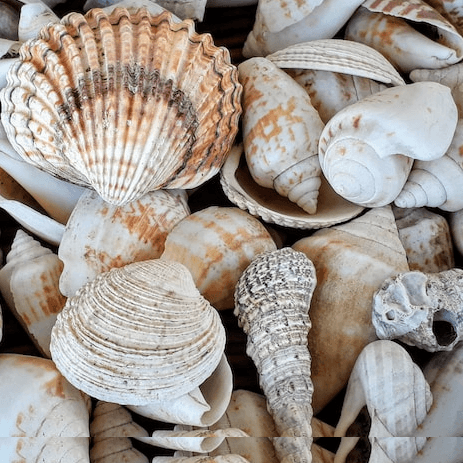
Sea Shells with Vinegar
Easy

In this fun experiment, you can see what happens when a sea shell is placed in vinegar or water for a week! Discover the science behind acid and base chemical reactions as you observe what happens to the sea shell!
Hypothesis
The hypothesis is that the vinegar (acid) will react with the calcium carbonate (base) in the sea shell, causing the sea shell to disintegrate.
Method & Materials
You will place a sea shell into a jar labeled "vinegar" and pour enough vinegar to cover the sea shell. Place another sea shell into another jar labeled "water" and pour enough water in the jar to cover the shell. After 1 day and 1 week, check the sea shells.
You will need two sea shells, vinegar, water and two jars that are large enough to hold the sea shells.
Results
The experiment showed that the acidic vinegar dissolved the sea shell, which is made up of basic calcium carbonate. The shell placed in water did not dissolve, because water is neutral and did not react with the basic calcium carbonate of the sea shell.
Why do this project?
This science project is fascinating because it demonstrates the reaction between an acid and a base can lead to the sea shell dissolving in vinegar.
Also Consider
Variations of this experiment could include testing different acids, such as lemon juice or orange juice, or soaking the sea shell in vinegar with baking soda.
Full project details
You can find additional information and details for this science fair project here. Have fun exploring!Related videos
Hey there! Here are some awesome videos about this science project that we think you'll really like. They're not only super fun, but they'll also help you learn more about the science behind the project. So sit back, relax, and get ready to have some fun!!
Have you ever wondered what happens to seashells when the ocean becomes more acidic? Check out the following video that shows an experiment comparing seashells in vinegar, which mimic the acidic ocean water, with the control of seashells in regular water. Can you guess what happened? The results were surprising and taught us how changes in the ocean can affect marine life. This experiment is a great way to learn about the powerful chemical reaction between acids and bases and understand the shocking impact of ocean acidification.
Eggs are also made of calcium carbonate like seashells. Be prepared for a surprise when a raw egg soaks in vinegar! Find out what happens in this surprising chemistry experiment!
Share this Science Project:
Related Science Fair Project Ideas
See colors magically move in milk with soap! This fun experiment demonstrates surface tension in a vivid way!
Easy
Make your own sparkling rainbow crystals at home with Borax and see science in action!
Easy
Make your own sparkling geode rock crystals at home with Borax and see science in action!
Easy
Share this Science Project:
